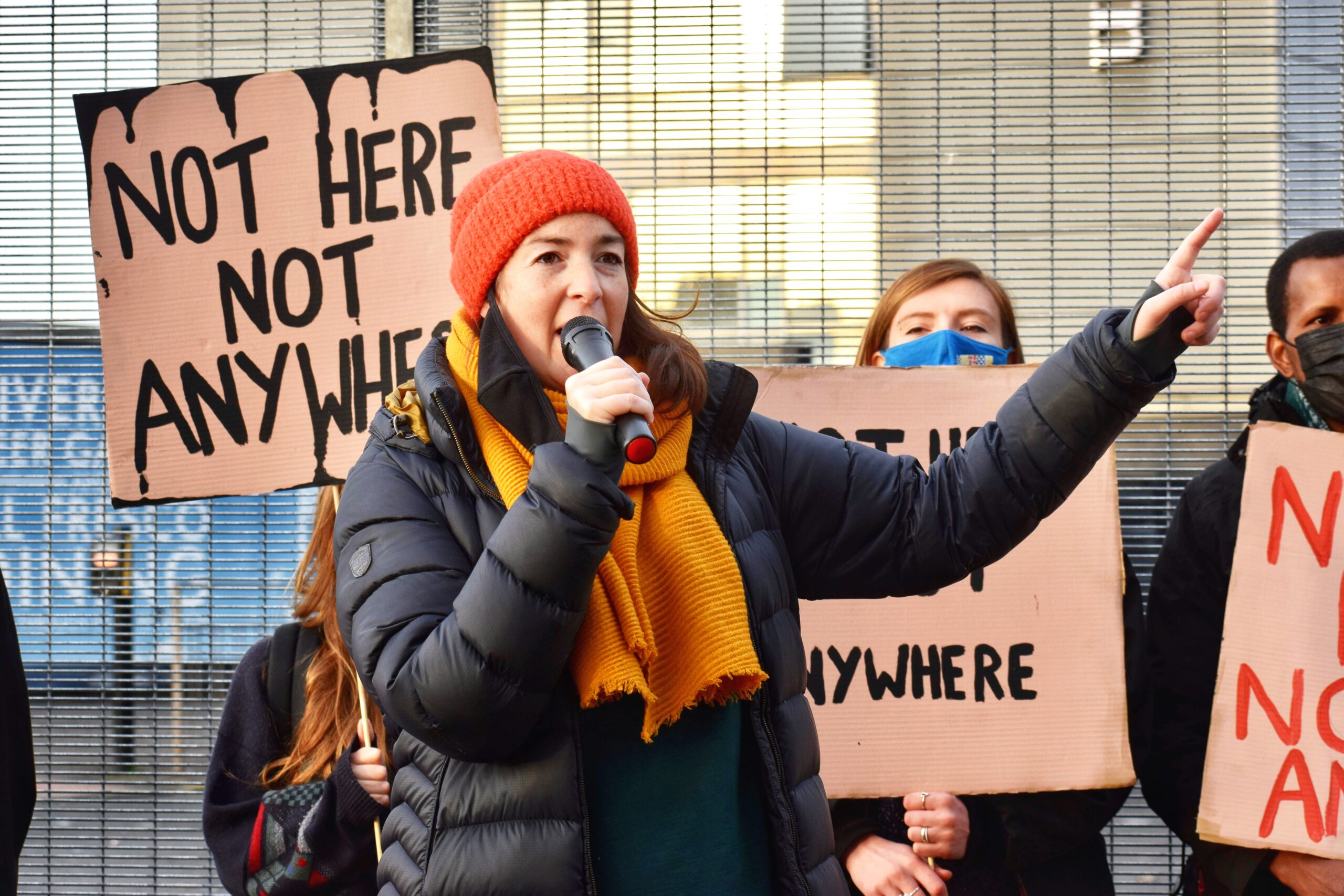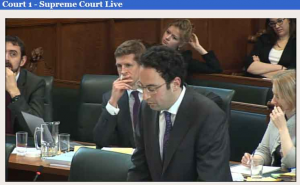
UK Government Spouts a lot of Hot Air in Nitrogen Dioxide Case
The environmental lawyers (pictured below) argued that the UK Government is breaking European law because it did not achieve safe levels of Nitrogen Dioxide by 2010, and because it failed to apply for a time extension to the 2010 deadline in respect of 16 areas (including Glasgow).
ClientEarth asked the Court to issue a “mandatory order” to require the UK Government to produce a concrete, time-bound, robust air quality action plan which spells out how clean air will be achieved in all parts of the UK, following criteria contained within the European Air Quality Directive.
The UK Government, predictably, argued for a watering down of the law which lets them off the hook and requires them to do, well, not very much. The Government is promising a new air quality plan but with no specificity about what will be contained in that plan.
It’s important to bear this mind when considering this case: as a result of the UK Government’s failure to reduce air pollution across the UK, people are being forced to breathe in toxic fumes which pose a risk to their health. 29,000 people across the UK die early because of air pollution each year, and the UK Government is essentially arguing the case to continue to deliver as little as possible for the people whose health relies on having a clean environment.
Let’s remember too that Scotland that it is bound by EU law; and it can make sure it stands the best chances of complying with the law by including the criteria set down in EU law within its own Low Emission Strategy. You can demand the Scottish Government takes action for clean air now at foes.do/LowEmissionStrat.

Here’s a quick summary of the main points made to the Supreme Court:
(1) The UK Government argued that because it lacked any idea about how to achieve clean air in 16 zones in the UK, it was off the hook from having to apply for a time extension to achieve the clean air deadline in respect of those places.
The UK Government is clearly stretching its creativity to try to interpret EU law to let itself off the hook. The victim of its creative interpretation is Article 22 of the Ambient Air Quality Directive. European law requires that safe levels of NO2 be achieved by 2010. Article 22 specifies that where the 2010 deadline would not be achieved, countries should apply for a 5 year extension, together with submitting clear plans which would show that compliance would be achieved by 2015.
The UK government told the Court in a rather convoluted way that it couldn’t come up with clean air plans for those 16 zones that would give those areas clean air by 2015, and therefore it was neither required to apply for a time extension, nor did it have to produce a robust plan which fit with the terms of that Article.
It argued that Article 22 means that if countries couldn’t show compliance by 2015 they are off the hook from having to apply for a time extension to the deadline and producing a plan in accordance with the Article.
Talk about playing on double negatives and trying to wriggle out of it!
We are not convinced by this at all, and hope that the Supreme Court will not be either.
In our view, ClientEarth is right that Article 22 imposes a mandatory obligation on countries to apply for time extensions for areas where clean air deadline would not be met and come up with plans to achieve compliance accordingly.
(2) There was a discussion about Italy which we did not entirely follow
The UK Government sought to rely on a past example of Italy being in breach of air quality laws, at which point the sound shut down in the live podcast. All I can add in this regard is that Italians are not well known for their punctuality so perhaps not the best example for the UK Government to cite (I’m Italian so can hopefully get away with this unpolitically correct cultural stereotyping…).
(3) The UK Government is asking the Court to put its blind faith in air quality plans which it has not seen, and which will not follow any set criteria.
The UK Government argued that it would submit revised plans to the European Commission which show that it will achieve compliance with clean air deadlines in “as short a time as possible,” but it has not specified when that will be. (Under the current plans, clean air will only be achieved by 2025 in Glasgow and by 2030 in London i.e. fifteen and twenty years behind the original deadline.) The UK Government argued to the Court that it did not have to comply with a robust and comprehensive list of criteria for a clean air plan that are set out in the European Directive. It asked the Court to put faith in its promise that its plans (which it has yet to produce) will be good enough. If past performance is anything to go by, then we doubt the Court will be minded to simply trust the UK Government.
ClientEarth asked the Court to require, through what is known as a “mandatory order” that the Government produces a concrete, time-bound, robust air quality action plan which spells out how clean air will be achieved in all parts of the UK, following the criteria as set down by the Directive.
At this point, we would put our money on ClientEarth winning the case and hope the UK Supreme Court will use its tools to grant an injunction which requires a strong action plan.
We are expecting the UK Supreme Court to issue its final judgment in a couple of months.
Remember that in Scotland, in the meantime, you can demand the Scottish Government comes up with a robust Low Emission Strategy at foes.do/LowEmissionStrat.
**UPDATE Read our blog on the Supreme Court’s verdict **
